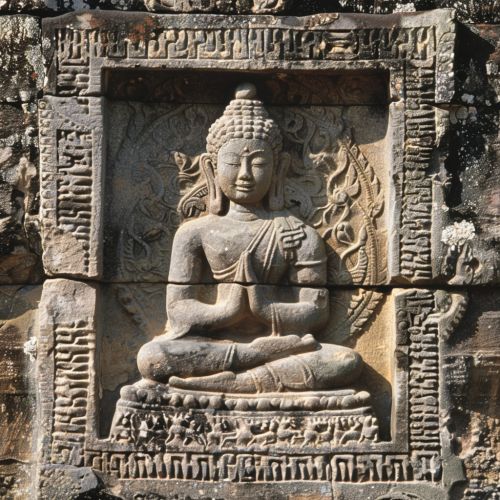Four Noble Truths
Overview
The Four Noble Truths are fundamental teachings in Buddhist philosophy. They are considered the first teaching given by the Buddha, Siddhartha Gautama, after his enlightenment. The truths are: the truth of suffering (Dukkha), the truth of the cause of suffering (Samudāya), the truth of the end of suffering (Nirodha), and the truth of the path that leads to the end of suffering (Magga).

The Truth of Suffering (Dukkha)
The first truth, Dukkha, is often translated as "suffering", but it can also mean dissatisfaction, stress, or discomfort. It refers to the fundamental unsatisfactoriness and painfulness of mundane life. It is the starting point of Buddhist philosophy and it is the reality from which the Buddha set out. It is the recognition of this truth that leads to the subsequent truths and thus to liberation.
The Truth of the Cause of Suffering (Samudāya)
The second truth, Samudāya, is the origin or cause of this suffering. According to the Buddha, the root of all suffering is desire, tanhā. This comes in three forms: desire for sensual pleasure (kāma-tanhā), desire for existence (bhava-tanhā), and desire for non-existence (vibhava-tanhā). These three types of desire are the cause of suffering and the cycle of rebirth.
The Truth of the End of Suffering (Nirodha)
The third truth, Nirodha, is the cessation of suffering. The Buddha taught that the end of suffering is attainable by extinguishing all forms of clinging and attachment. This state is known as Nirvana. It is a state of liberation and freedom from suffering.
The Truth of the Path that Leads to the End of Suffering (Magga)
The fourth truth, Magga, is the path that leads to the cessation of suffering. This is known as the Noble Eightfold Path. It is a practical guideline to ethical and mental development with the goal of freeing the individual from attachments and delusions and it leads to understanding, love and enlightenment.
The Noble Eightfold Path
The Noble Eightfold Path is the path which leads to the end of suffering, as proposed by the Buddha. It is a practical guideline to ethical and mental development with the goal of freeing the individual from attachments and delusions; and it leads to understanding, love and enlightenment. The Noble Eightfold Path is divided into three sections: Wisdom (Right Understanding and Right Intention), Ethical Conduct (Right Speech, Right Action, and Right Livelihood), and Concentration (Right Effort, Right Mindfulness, and Right Concentration).
Significance and Interpretation
The Four Noble Truths are of great significance in the Buddhist tradition. They are often considered the condensed essence of the Buddhist teachings and are said to encompass the entire Buddhist path. They are seen as the understanding of the world, the way to beyond it, and the path that leads to this transcending.
